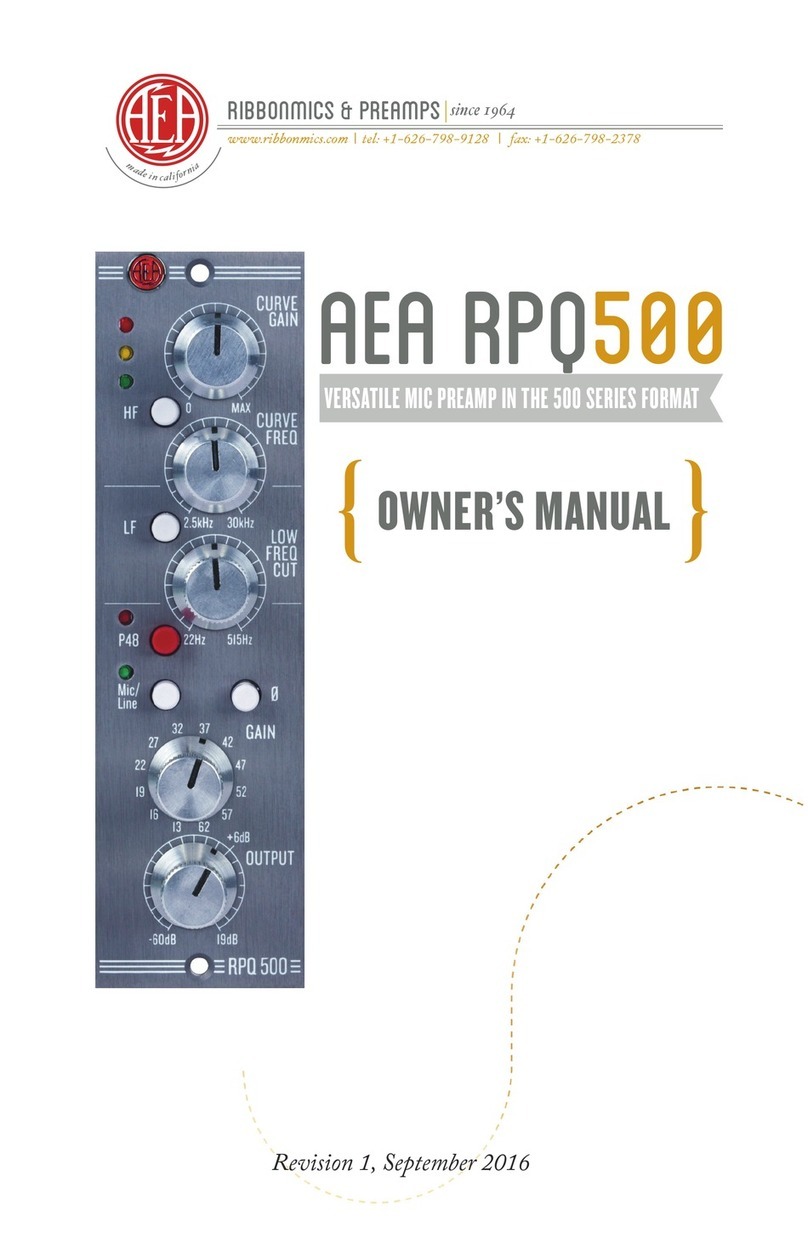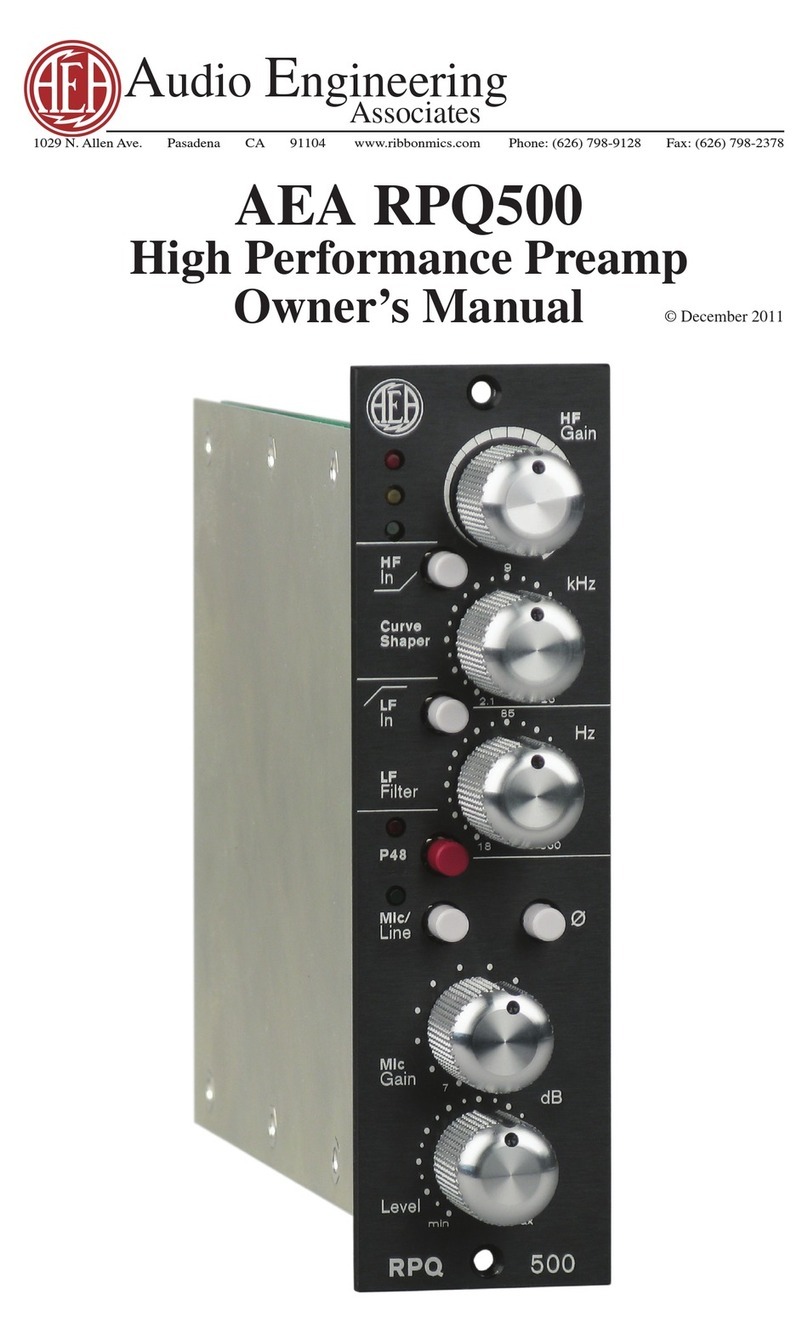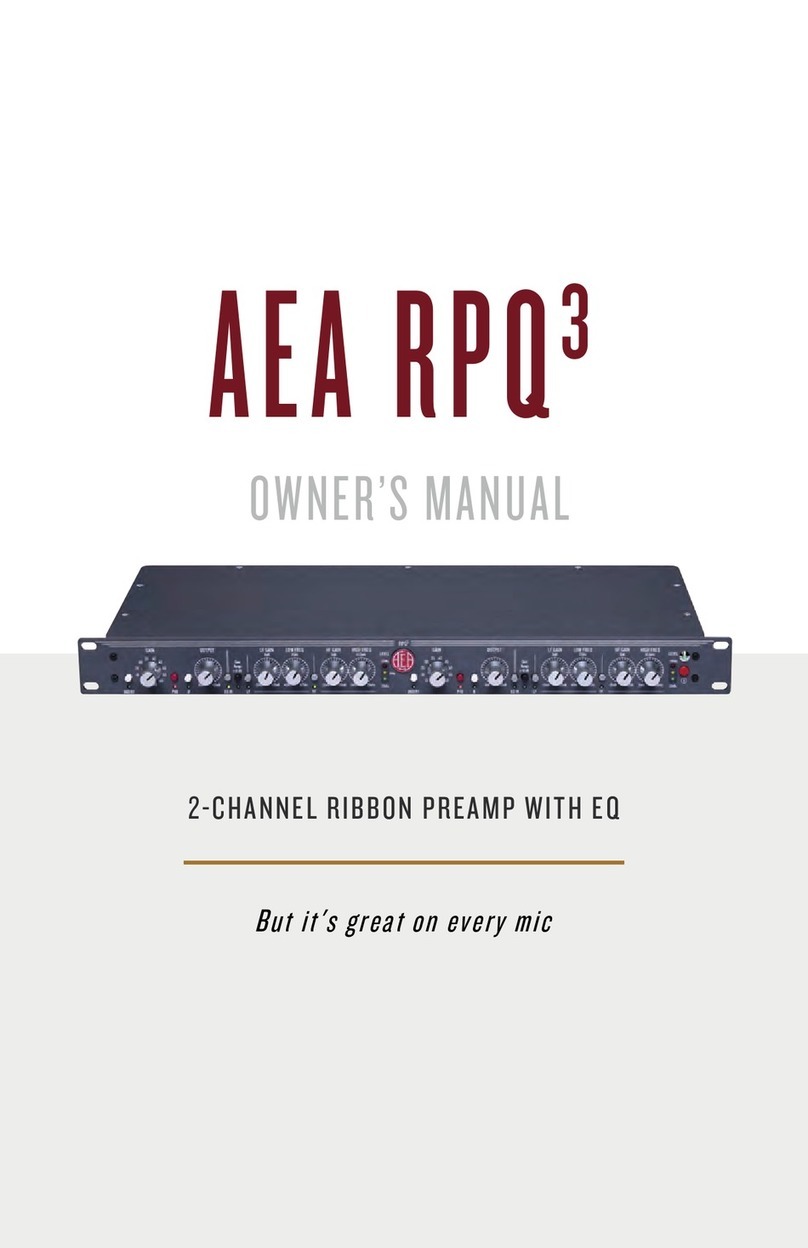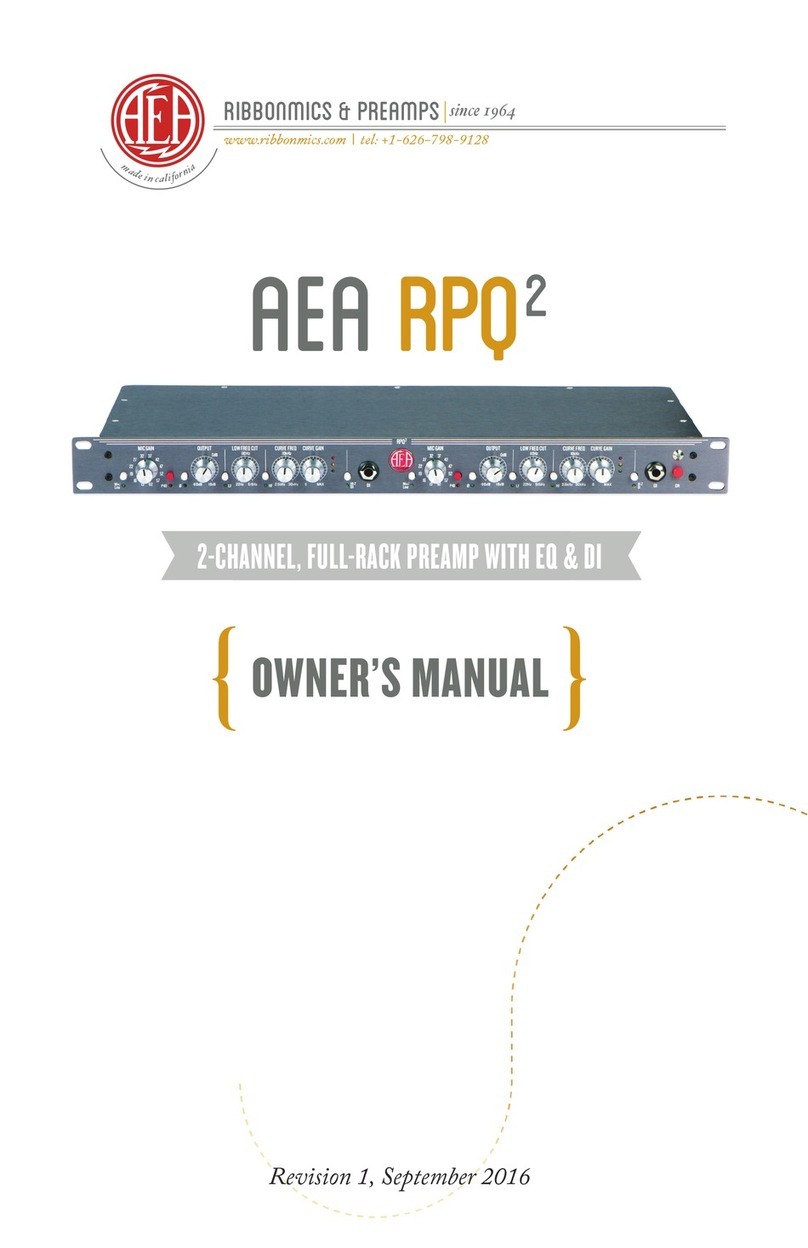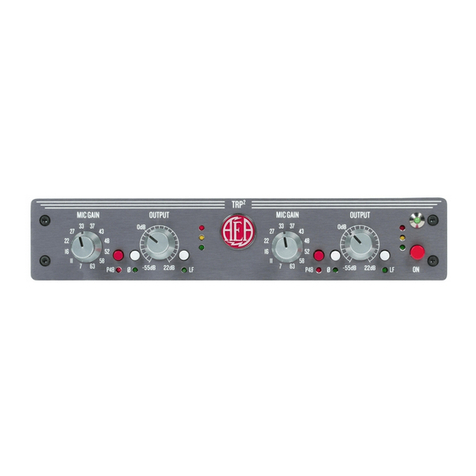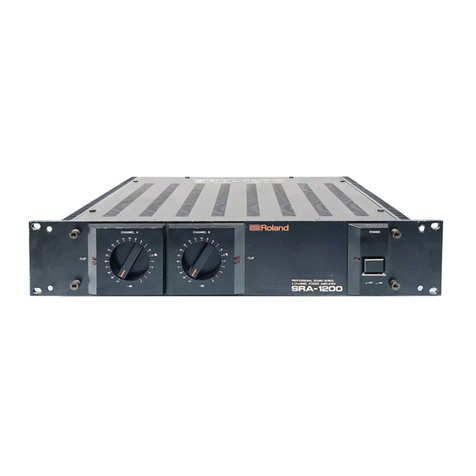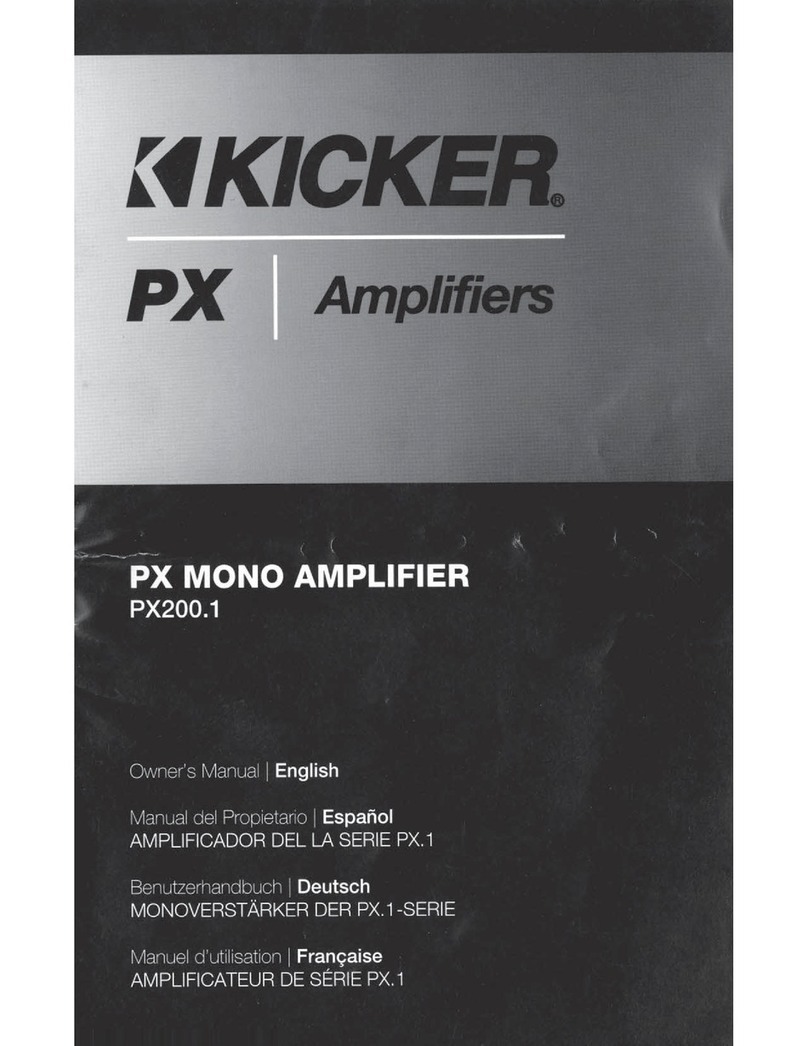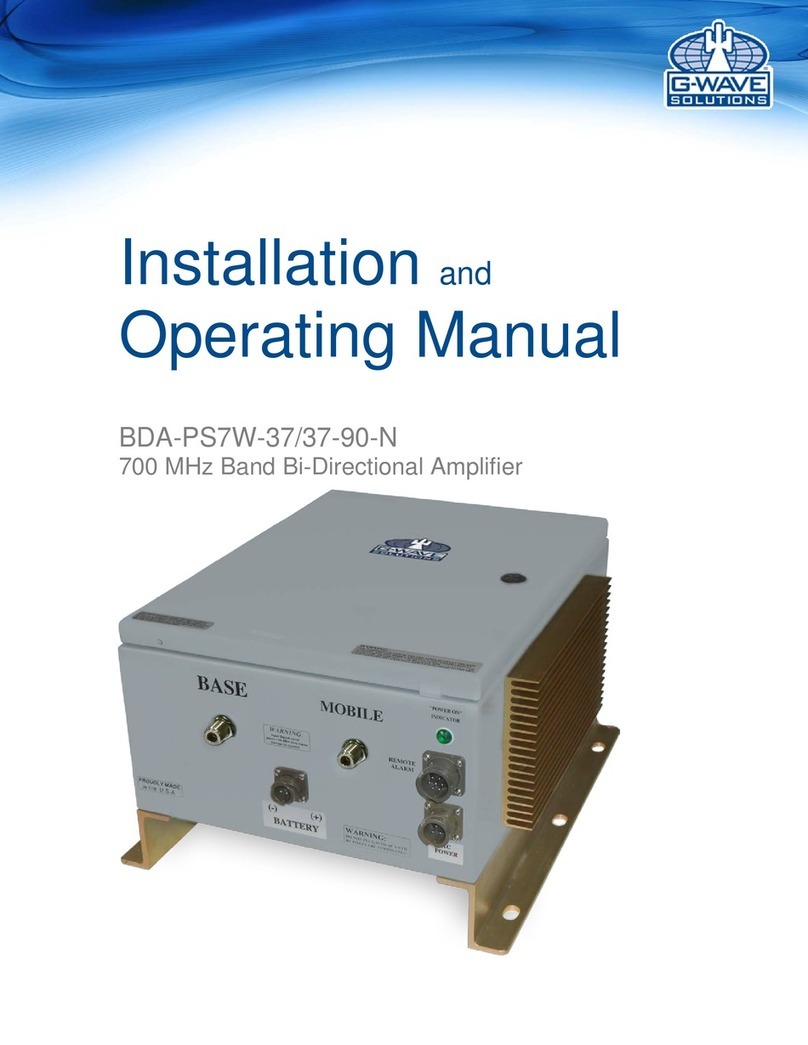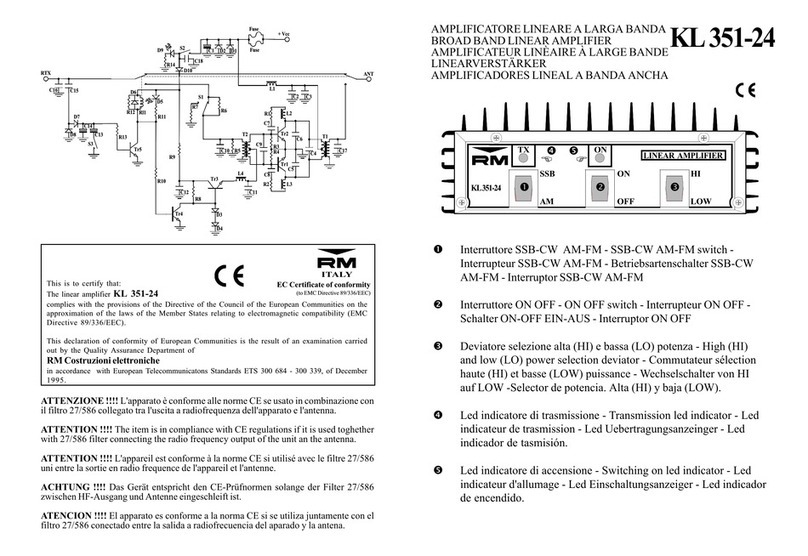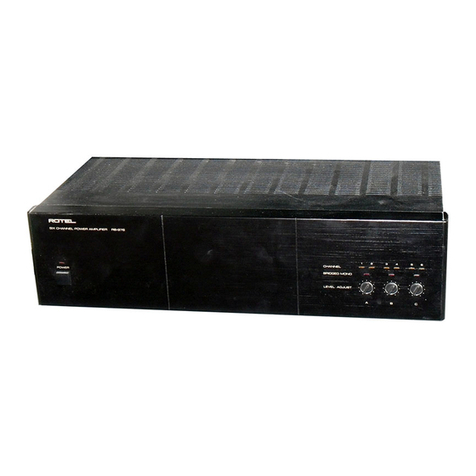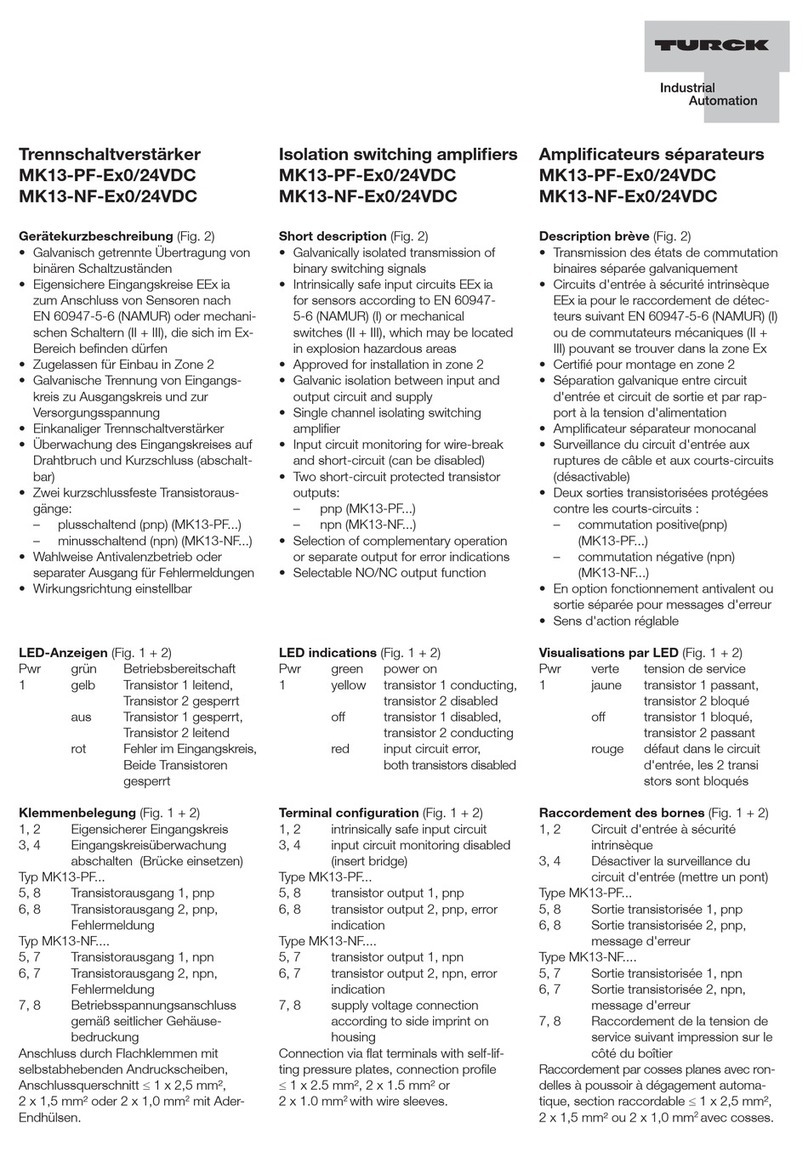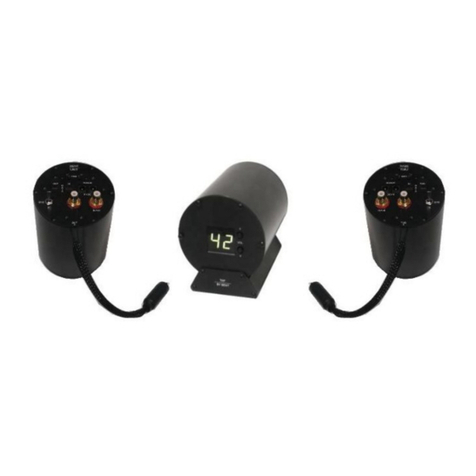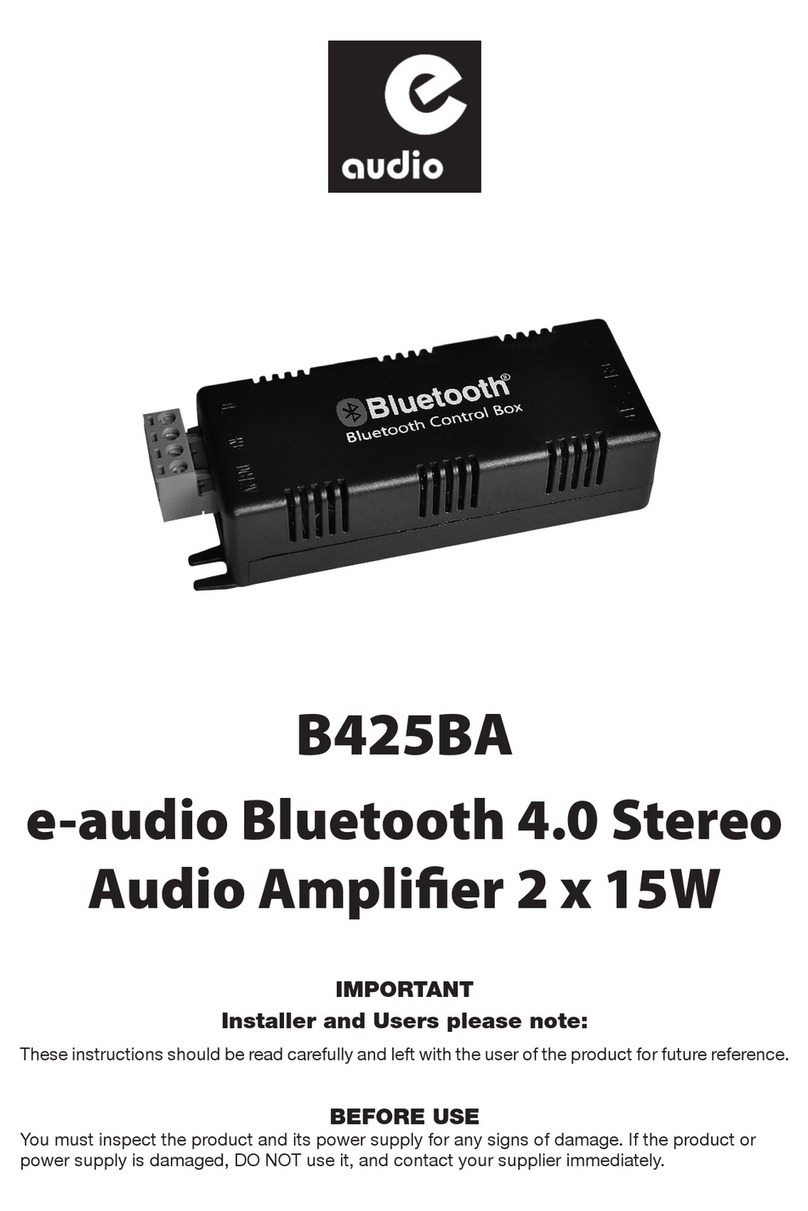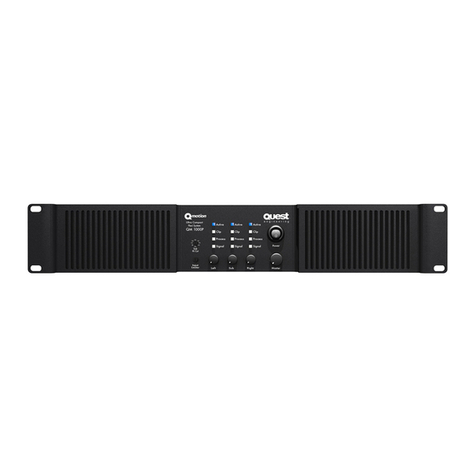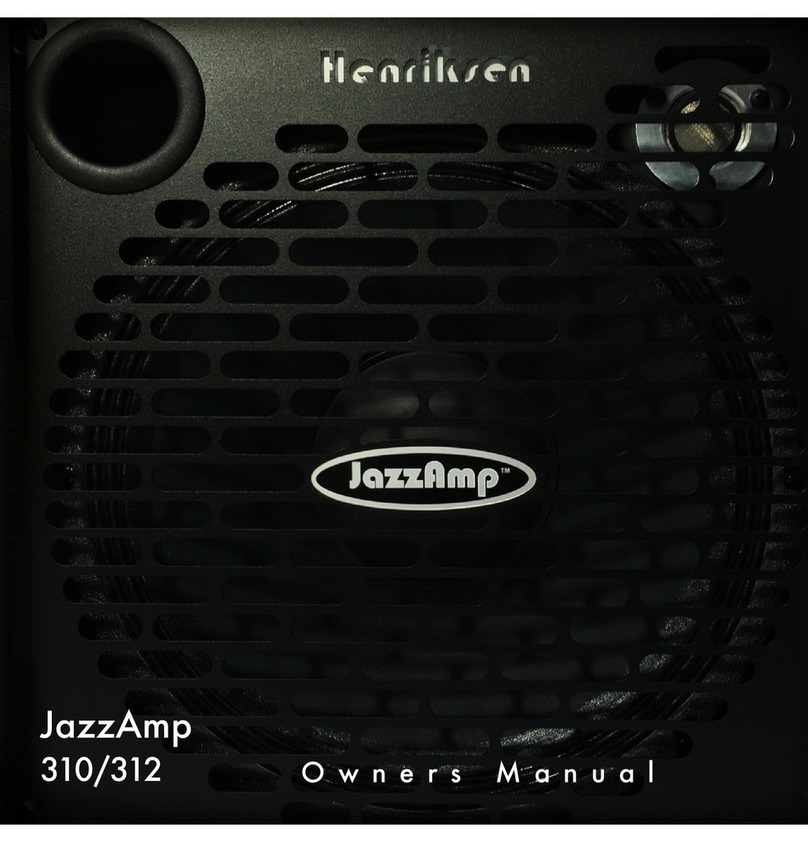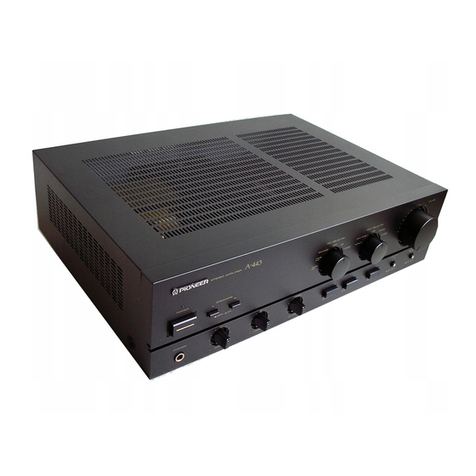AEA 500 Series User manual

500 SERIES MICROPHONE PREAMPLIFIER
AEA TRP500
OWNER’S MANUAL

WELCOME
Congratulations on your purchase of the AEA TRP500 microphone
preamplifier, AEA’s third iteration of our low noise, ultra-high gain
and impedance architecture. At AEA, we put the same thought
and care into our preamps as we put into the development of our
microphones: sonic quality comes first.
In the past 16 years, AEA's preamps have surpassed the limitations
of 20th century electronics, allowing you to fully appreciate the
sonic complexities of your microphone. The TRP500 leans on the
side of neutral but is unlike other "clean" preamps because of its
rich and musical tonality. It offers up to 85dB of effortless gain for
any microphone and sonics that invite hearts to listen deeper.
Your TRP500 is 100 percent handcrafted in Pasadena, California.
AEA is a family-owned company with a small crew of skilled
technicians, many of whom are musicians themselves. Proudly
independent, we still manufacture all our ribbon microphones and
preamps by hand, in-house, from locally sourced parts.
We hope the TRP500 helps capture many magical musical
performances. Read this manual thoroughly to make sure you get
the best sound and longevity from your new preamp. We invite you
to become part of the AEA community by sharing your experiences
with the TRP500 via email, phone, or our social media channels.
Wes Dooley
President of AEA
2

CONTENTS
WELCOME
INTRODUCTION
SUPPORT
GENERAL GUIDELINES
FRONT PANEL GUIDE
INPUT & OUTPUT CONNECTIONS
SETTING THE GAIN
SPECIFICATIONS
2
4
4
5
5
7
3
8
10

INTRODUCTION
Based on the circuit and topology of our original AEA TRP preamp,
the TRP500 has the low noise, musical sonics, and ultra-high gain
and impedance (100,000 Ohms) that AEA is renowned for. The
TRP500 excels at drawing out the warmth and lush sound of ribbon
mics as well as other top-level microphones. With up to 85 dB of
quiet DC-coupled gain, minimal path architecture, and a gentle 115
Hz or 230 Hz high pass filter, this preamp puts as little as possible
between you and your audience.
WARRANTY
SUPPORT
Your TRP500 comes with a one-year
limited warranty on parts and labor,
shipping not included. Registering
your product with AEA will extend
the warranty to a full three years.
Scan the QR code to register.
If you should encounter any problems with your TRP500 preamp
or have questions regarding specific applications, please contact
quickest response.
To contact us by phone, please call +1-800-798-9127 from 9:00
a.m.- 5:00 p.m. PST Monday-Friday. AEA's repair center is located at
1029 N. Allen Ave, Pasadena, CA 91104, U.S.A.
4

GENERAL GUIDELINES
5
To maintain the best performance from your new AEA TRP500
preamp, take note of these three requirements:
1) Before powering up the unit, make sure the preamp is properly
secured and seated in the slot. Two flathead Phillips screws are
supplied with each preamp.
2) Never place the rack or preamp close to electromagnetic
fields or hot surfaces. Electromagnetic fields created by power
transformers, motors, or RF transmitters can potentially damage or
interfere with the preamp functionality.
3) Before turning on the power, all connections to the preamp
should be made and the Mic Gain and Output Level control set at
their minimum setting. Be sure to examine the signal chain before
powering up the preamp to ensure sudden loud noises are not
emitted which could damage your system or hearing.
FRONT PANEL GUIDE
1
2
3
4
5
6

6
FRONT PANEL GUIDE
Audio Signal Level Indicators:
The green LED snaps on at -20 dBu to indicate the presence of
signal.
The yellow LED snaps on at 0 dBu.
The red LED snaps on at +20 dBu to warn of approaching
signal overload.
High Pass Filter (HPF):
3-position switch provides a gentle 6 dB per octave with choice
of -3 dB points at 115 Hz or 230 Hz.
Polarity Invert Switch:
OUT is normal; IN is inverted.
The green LED near the switch indicates inverted polarity.
Phantom Power (P48) Switch:
OUT is off and increases the preamp's input impedance to
100,000 Ohms.
IN ramps up full-spec P48 phantom power to the input, which
reduces the input impedance to 11,900 Ohms.
The red LED near the switch indicates when P48 phantom
power is engaged.
Mic Gain Rotary Switch:
12-position precision switch adjusts gain from +7 dB to +65 dB.
Output Stage Gain Control:
A potentiometer varies gain from 0 dB to +20 dB.
Full Counterclockwise = 0 dB (unity) gain.
Full Clockwise = +20 dB gain.
9 o’clock is ~+3 dB, 12 o’clock is ~+7 dB, 3 o’clock is ~+17 dB.
1 -
2 -
3 -
4 -
5 -
6 -

7
INPUT & OUTPUT CONNECTIONS
Input Connection
When the TRP500 is operated with ribbon, moving-coil dynamic, tube,
and any other microphone that does not use phantom power, it is
recommended that the P48 switch (ref. #4) be set to the OUT position
before any input is connected, to prevent loud pops when plugged in.
The P48 LED will be lit in red when phantom power is engaged.
Cable Care
To prevent possibly damaging the equipment in your system and to
ensure consistent performance, we recommend you regularly test your
microphone cables to determine whether they have any open, shorted,
reversed, or intermittent connections.
Output Connection
The output of the TRP500 emulates a transformer-coupled output and
can be used as either a balanced or unbalanced signal (depending on
how your cable/system is congured). When balanced, the maximum
output level is +28 dBu; when unbalanced, the maximum level is +22
dBu. (These are as measured into a 600 Ohm load; the recommended
load is > 10K Ohms; 0 dBu = 0.7746 V rms.)
When unbalancing the XLR output, pin-3 must be tied to ground at the
receiving end (i.e. the input of the following device). Use a balanced
cable to the unbalanced load. Do not tie pin-3 to ground directly at
the output of the TRP500.
Input Impedance
The ultra-high gain DC-coupled JFET circuit has two input
impedances: 11,900 Ohms with phantom power "ON" and 100,000
Ohms with phantom power "OFF." The 100,000 Ohm mode brings
out the best in passive ribbons and tube mics, and also provides a
unique balanced input for vintage, high-impedance dynamic mics.
This versatility ensures the highest sensitivity, bandwidth, transient
response, and clarity possible for a wide variety of microphones.

8
Should the microphone source impedance be the same as its load
impedance?
This is a telephone technique from before tubes were invented.
Matching the impedance of a telephone’s microphone with the
load maximized the listener’s volume at the other end of the line.
But now it just increases distortion, decreases headroom, and
degrades transient and frequency response. When a mic’s output
impedance matches the preamp’s input impedance, 6 dB of level
is lost. The noise floor goes up 6 dB and the preamp will need 6 dB
more gain.
The high-impedance design of the TRP500 results in no loss of level
or signal quality due to impedance mismatching.
SETTING THE GAIN
The TRP500’s minimalist JFET circuit design delivers up to 85 dB of
clean, quiet gain. With extended bandwidth from below 10 Hz to
beyond 200 kHz, it delivers effortless dynamic range and transient
response that complements all microphones. Its DC-coupled circuit
extends the low frequency response and speeds recovery to linear
operation after overloads.
As with any piece of audio equipment, setting and maintaining
proper signal levels is critical to obtaining optimum performance. If
the level is set too low, noise performance is sacrificed; if the level
is too high, there’s a risk of overload distortion.
Setting the AEA TRP500 gain begins by setting the first stage GAIN
and second stage OUTPUT knobs fully counterclockwise. The first
stage GAIN control has 12 precision steps from +7 dB to +65 dB.
The second stage OUTPUT potentiometer knob when all the way
down (counterclockwise) adds no gain, and all the way up adds +20
dB. The three LEDs: green, yellow and red (ref.#1) snap on at -20, 0,
and +20 dBu to indicate signal activity.

9
First Stage GAIN Control Adjustment
Connect the microphone and then, if needed, turn on phantom
power. Have the performer(s) play a louder section and click up the
GAIN (ref.#5) until the yellow LED usually lights and the red LED
rarely lights. The control uses ultra-low noise and high precision
resistors with gold-plated 12-position switches made in the USA.
We’ve used them for 37 years without a failure.
Second Stage OUTPUT Gain Trim
The OUTPUT Control (ref. #6) potentiometer adjusts gain from 0 dB
(unity gain) at the bottom to +20 dB gain when fully turned up. Like
the 12-step GAIN control, the 0 dB and +20 dB OUTPUT positions
are accurate and repeatable. To reset to an in-between position,
mark it during the session. Approximate OUTPUT gain at 9, 12, and
3 o’clock are +3 dB, +7 dB, and +17 dB. The red LED lights 8 dB
before clipping with a balanced load, so listen carefully to see how
it sounds when the red LED lights up more often.
During rehearsal, check the input level adjustment for your DAW,
console, or audio recording device. If the red LED is illuminated
too often or too long, reduce the Mic GAIN one step at a time until
the red LED illuminates briefly on the loudest peaks. If the red LED
occasionally flashes while recording, this does not necessarily mean
that the preamp is clipping.
The energy and excitement generated during a performance
guarantees it will be louder than the rehearsal. After setting the
GAIN during sound-check, operators might want to reset the GAIN
control one or two clicks lower for the actual performance. When
needed, this GAIN decrease can be added back in by turning the
OUTPUT knob up.

10
SPECIFICATIONS
Max Gain at 1kHz:
EIN (Max gain):
DC Current Draw:
Frequency Response:
THD+N:
XLR Output Max Level:
Input Impedance:
Output Impedance:
Max Input Signal Level:
Mic Gain Control:
Mic Output Trim:
High Pass Filter Frequencies:
XLR Connector Polarity:
LED Signal Level Indicators:
Dimensions:
Front Panel:
Width:
Depth:
Height:
Weight:
85 dB of gain, balanced-in to balanced-out
< –128 dBu (22 Hz to 22 KHz, unweighted,
40 Ohm source), typically -130 dBu
from +16/-16V Rails: 130 mA
30 dB gain: (+0/-0.6 dB from <10 Hz to 200kHz)
85 dB gain: (+0/-1 dB <20 Hz to >100kHz)
(+0/-2.5 dB <10 Hz to 200kHz)
0.0017% (1kHz, 22Hz-22kHz @30 dB Gain
+4 dBu output)
+28.5 dBu into 600Ω load (before 1% THD)
11.9kΩ (with Phantom), 100kΩ (no Phantom)
50Ω
21.5 dBu at minimum gain (before 1% THD)
12-position switch provides from +7dB to
+65dB of gain for the preamplier circuit, as
measured between the input and output
when the OUTPUT control is set fully
counterclockwise (0 dB)
Output potentiometer provides from 0 dB
(unity gain) to +20 dB of gain
3-position on-off-on switch provides
switchable rst order passive high pass lter
(-6 dB per octave) with cutoff frequencies
(-3 dB) at 115 Hz and 230 Hz
Pin-1 is ground, pin-2 is high, pin-3 is low
The green LED snaps on at -20 dBu to indicate
the presence of signal; the yellow LED snaps
on at 0 dBu; the red LED snaps on at +20 dBu
to warn of approaching signal overload, which
is 8 dB prior to clipping
0.125” (0.32 cm) anodized aluminum
1.5" (3.81 cm)
6.8" (17.27 cm)
5.2" (13.21 cm)
10.1oz (~0.29 kg)

11

This manual suits for next models
1
Table of contents
Other AEA Amplifier manuals
